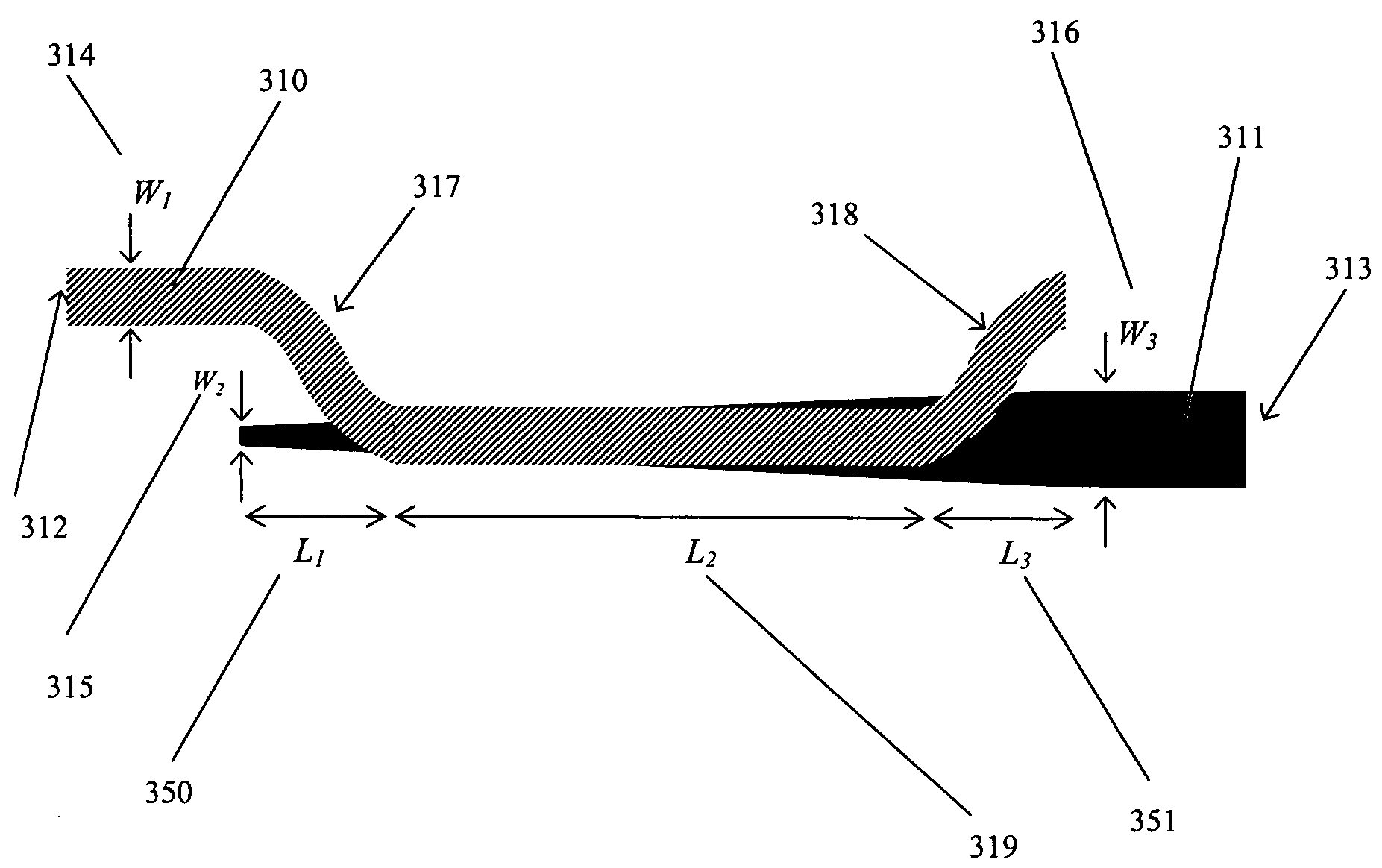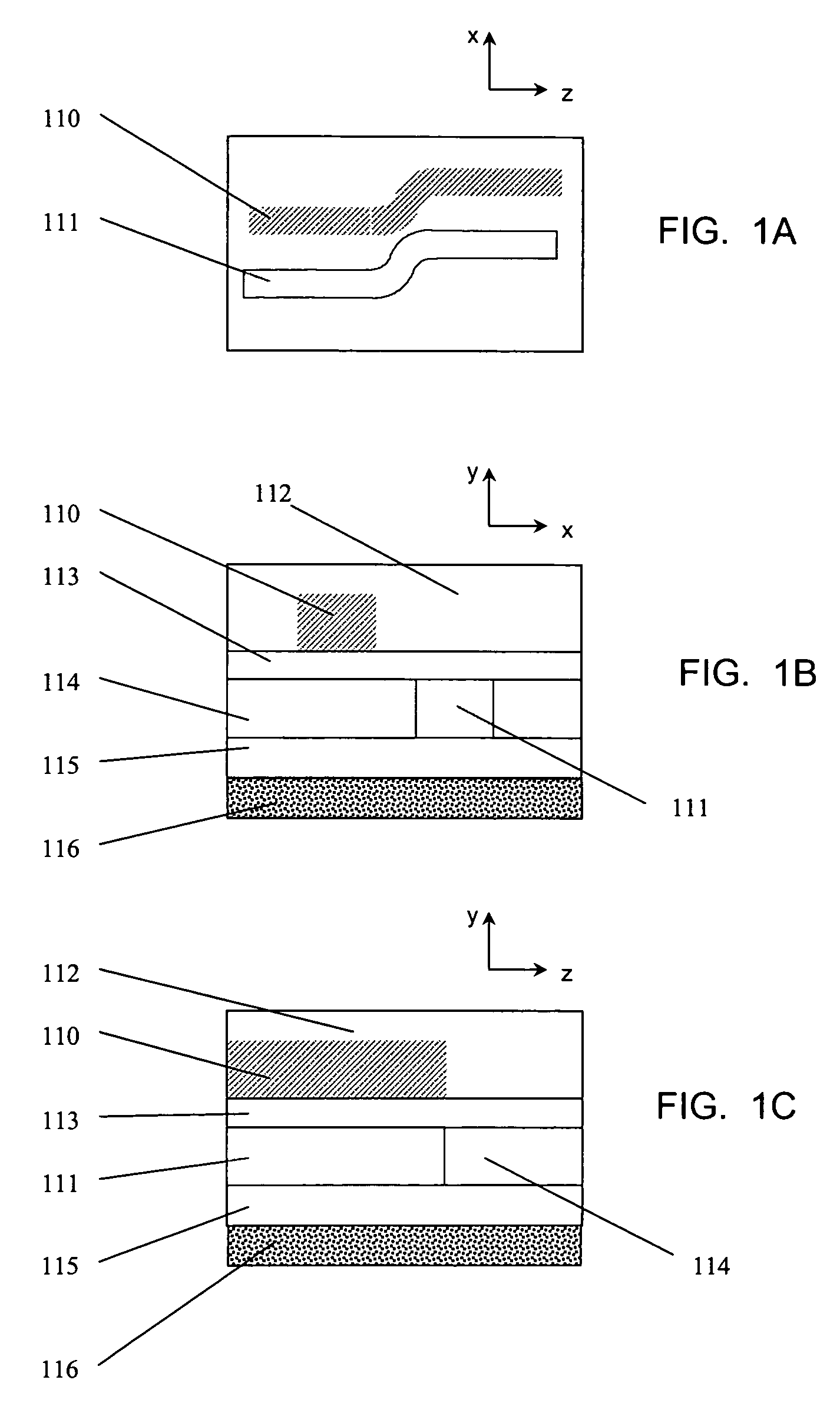Broadband optical via
- Summary
- Abstract
- Description
- Claims
- Application Information
AI Technical Summary
Problems solved by technology
Method used
Image
Examples
Embodiment Construction
[0031]We describe here the general principle of the broadband, fabrication insensitive optical via. The via is based on the directional coupling between two waveguides situated on two vertically positioned layers, as previously described in conjunction with FIG. 2. However, in the present case the coupling strength between the two waveguides, and the relative detuning in the propagations constants, or equivalently the effective indexes, are varied as a function of propagation distance in a prescribed manner. The resulting structure is longer than the simple beat-length uniform directional coupler, but is more insensitive to exact length, wavelength, index variations, geometrical dimensions and polarization.
[0032]FIGS. 3A to 3C show schematic views of the broadband optical via invention. FIG. 3A shows a top-down schematic view of the broadband optical via. Two shaped waveguides on two different layers comprise the optical via. Waveguide 1 (310) is on planar layer 1 (347) and Waveguid...
PUM
 Login to View More
Login to View More Abstract
Description
Claims
Application Information
 Login to View More
Login to View More - R&D
- Intellectual Property
- Life Sciences
- Materials
- Tech Scout
- Unparalleled Data Quality
- Higher Quality Content
- 60% Fewer Hallucinations
Browse by: Latest US Patents, China's latest patents, Technical Efficacy Thesaurus, Application Domain, Technology Topic, Popular Technical Reports.
© 2025 PatSnap. All rights reserved.Legal|Privacy policy|Modern Slavery Act Transparency Statement|Sitemap|About US| Contact US: help@patsnap.com



